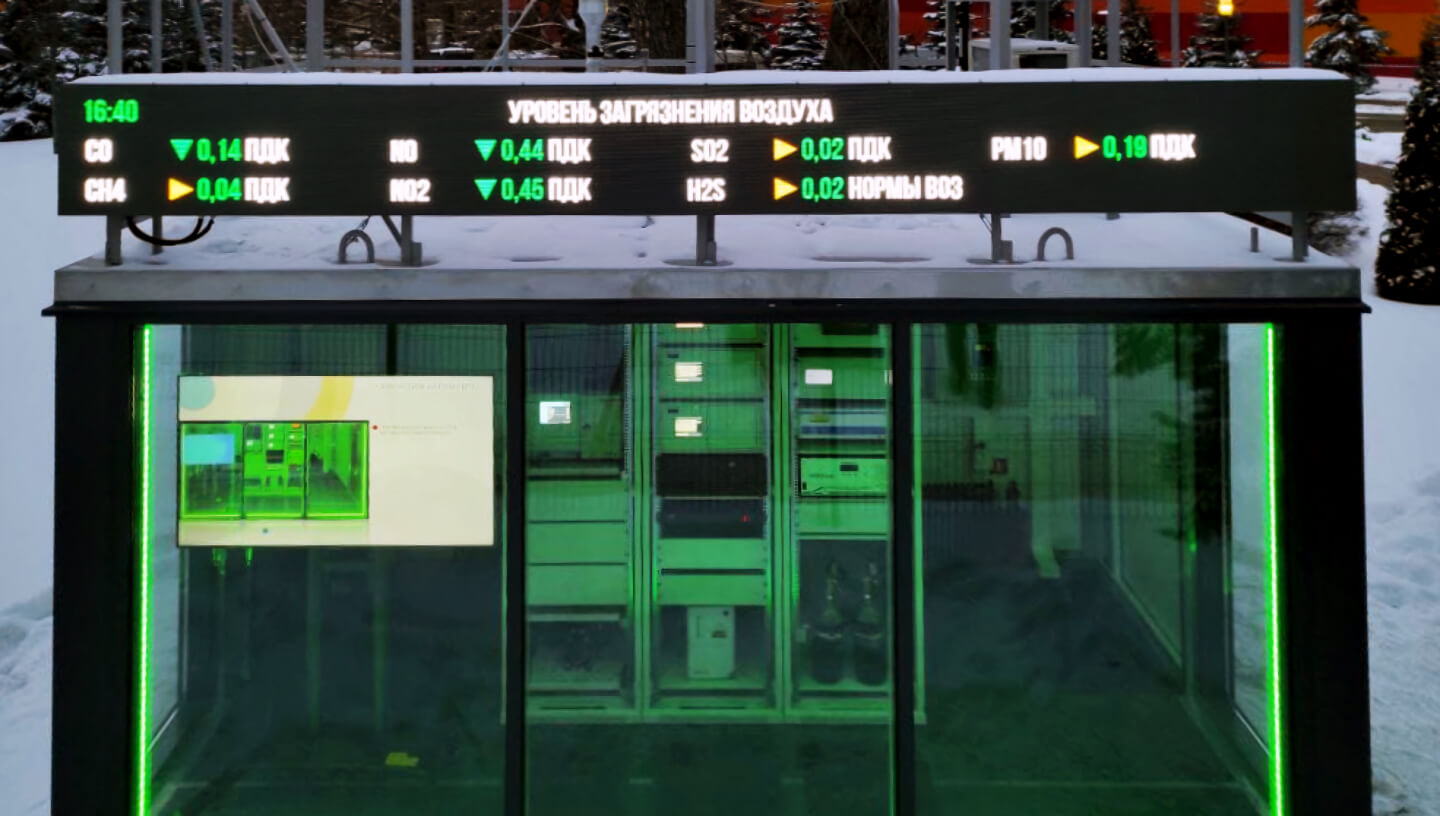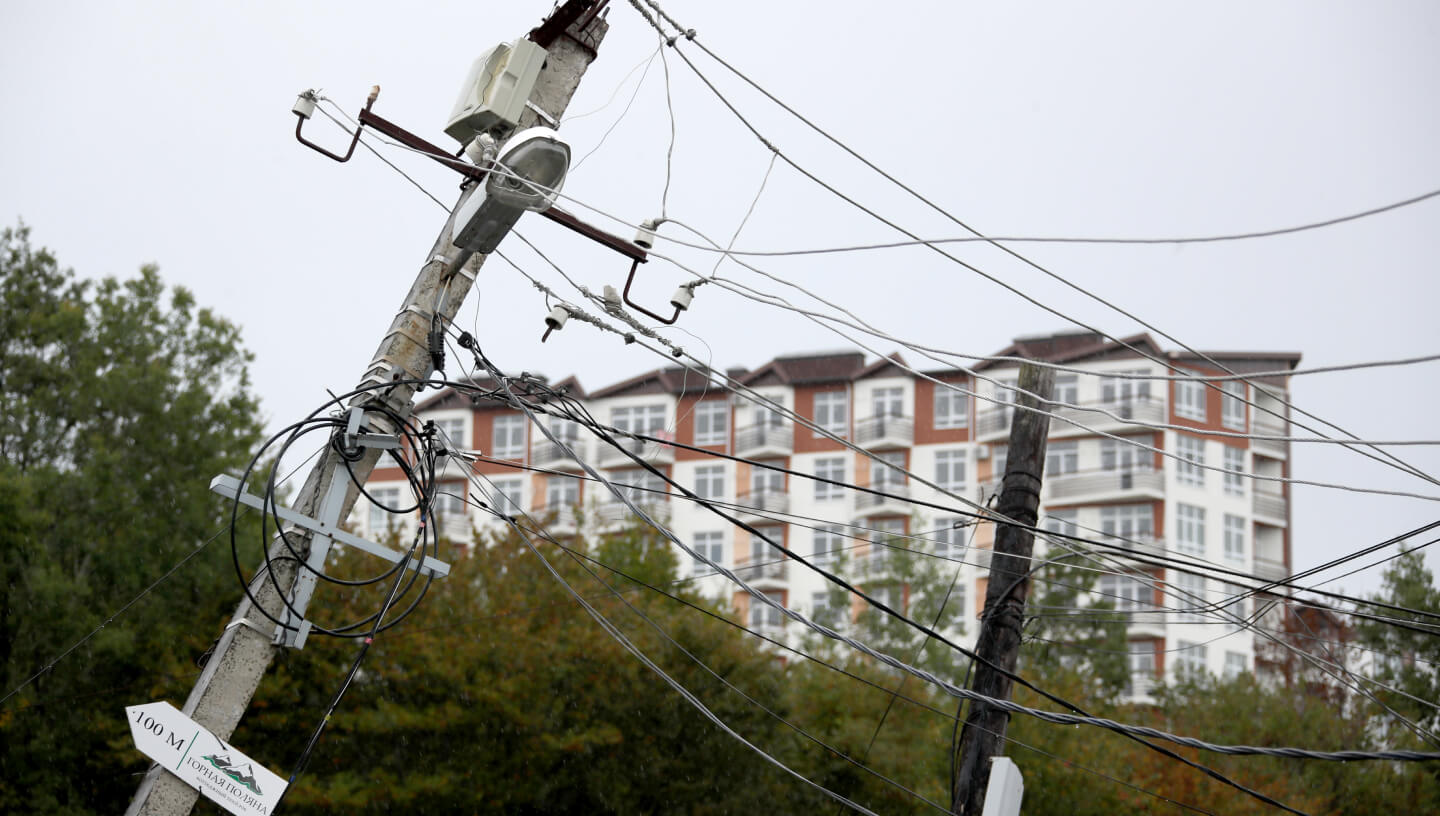The Moscow eco-monitoring system receives 70 million measurements annually. This includes information on the condition of water, air, soil, green spaces, as well as the results of observations of dangerous geological processes, such as ground subsidence. Many surveys are carried out continuously so that immediate action can be taken if there are deviations from normal conditions. We tell you about new equipment that helps Mosekomonitoring’s specialists monitor the state of the environment 24/7.
Modernisation of the air monitoring system
Air quality in Moscow is monitored by automatic air pollution control stations (AAPCSs). They are regularly updated, for example, in 2020, 13 AAPCSs were routinely replaced. Peter Biryukov, Deputy Mayor of the capital, noted that the new stations are highly reliable. Each of them is equipped with modern devices for monitoring the concentration of carbon monoxide, hydrocarbon compounds, nitrogen oxide and dioxide, hydrogen sulphide and other pollutants in the air.
Particular attention is paid to PM2.5 suspended particulate matter in the atmosphere. This is a dangerous pollutant, also called fine dust. PM2.5 enters the respiratory tract and then into the bloodstream, accumulating in the lungs and blood vessels. Regular inhalation of contaminated air triggers an inflammatory process in the body and increases the risk of respiratory and cardiovascular diseases. Fortunately, modern equipment makes it possible to monitor PM2.5 levels in the atmosphere in real time.
In addition, 24 new AAPCSs have been commissioned over the last 10 years: including one in the TiNAO (the combined territory of the Troitsk and Novomoskovsk administrative districts), three near the Moscow Oil Refinery, and two in the Eastern Administrative District. The number of AAPCSs monitoring hydrogen sulphide content in the air increased from 4 to 33, and the number of stations measuring the concentration of suspended microparticles PM10 increased from 13 to 36.
 Automatic atmospheric air pollution control station. Photo: Press Service of the Mayor and Government of Moscow
Automatic atmospheric air pollution control station. Photo: Press Service of the Mayor and Government of Moscow
Air without borders
In 2021, 15 new autonomous air pollution monitoring stations appeared in the area from the Moscow Ring Road to the Central Ring Road. They are in the form of small cube-shaped structures with sensors on the roof. Instruments are placed inside, which analyse the collected data.
This is the first and far from the last experience in creating an inter-regional monitoring system. As Andrey Razin, Minister of Ecology and Nature Management of the Moscow Region, points out, the air has no territorial boundaries and it is important that all residents of Moscow and the Moscow region can breathe freely.
A climate control system is installed inside the stations to ensure trouble-free operation. In winter it protects the equipment from freezing and in summer from overheating. The stations operate around the clock and send a report to Mosmonitoring every 20 minutes. If the air quality has deteriorated, the inspectors of the task force drive around in a vehicle equipped with a mobile ecological laboratory and find the source of the emissions. But often there is no need to investigate — most of the enterprises in the capital are equipped with sensors that analyse the concentration of pollutants in the air. The data collected by these devices is automatically sent to the Department of Natural Resources and Environmental Protection, so it is not difficult to find the offender.
 Innovative automatic air pollution control station. Photo: Office of the South Butovo District Council of Deputies
Innovative automatic air pollution control station. Photo: Office of the South Butovo District Council of Deputies
Visibility and accessibility of monitoring
At the beginning of 2021, Mosmonitoring commissioned an updated model of the air pollution monitoring station. Not only does it continuously monitor the concentration of pollutants, but it also displays the data on an LED display. The LED panel lights up when a person approaches and goes out when the person leaves. This makes it possible to use energy efficiently.
The new station has transparent walls that make it easy to monitor the operation of the equipment. The colour of the station’s illumination changes according to the level of air pollution, allowing passers-by to assess the environmental situation from afar.
The station is located on the site of Technopolis Moscow. This place was not chosen by chance — construction of a large transport hub was started nearby, which means that a large flow of people will pass by. Similar stations are planned for other points of attraction for Muscovites.
 Photo: Dmitriy Serebryakov / TASS
Photo: Dmitriy Serebryakov / TASS
Tree condition monitoring
Hurricane winds, heavy rains and other abnormal natural phenomena are becoming more frequent due to climate change. One of their dangerous consequences is the fall of trees. This often happens unexpectedly: shortly before the fall, the trees look healthy and do not have a significant slope. In the last six months alone, fallen trees in Moscow have killed four people and injured more than ten.
In order to strengthen control over green spaces, an innovative monitoring system Tree Talkers has been tested in the capital city. Experts from the laboratory of the Peoples’ Friendship University of Russia (PFUR) developed it. Sensors are attached to the trunk to measure the status of the tree: the degree of slope, the presence of rot and pests, the resilience of wood, the intensity of photosynthesis and the movement of sap. A special programme analyses the information every hour to determine whether the trees are dangerous or not.
Elvira Dovletyarova, head of the Department of Landscape Design and Sustainable Ecosystems at the Agrarian and Technological Institute of the Russian Peoples’ Friendship University, said it was not necessary to attach sensors to every trunk. When choosing an object to observe, it is worth considering its age: a third of the capital’s trees can be called elderly — they are more than fifty years old. It is also worth paying attention to its danger to passers-by and its appearance (for example, poplars fall more often because of their dense crowns and superficial root system).
A study on noise pollution
According to the World Health Organisation, loud, unnatural noise is harmful to health. It can reduce performance, cause insomnia, irritability and cardiovascular problems.
The usual soundscape of a metropolis is often disrupted by vehicles. And some people purposely upgrade their cars to “be the loudest”. Road cameras with microphones help to track down drivers who have removed a muffler or installed sound amplifiers, powerful speakers and subwoofers in their cars. These appeared in the capital in 2021. These devices are able to distinguish the sound of a passing car or motorbike from any other noise.
Another factor causing discomfort to residents of the capital is the noise associated with construction and road repair work at night. Sensors that measure the level of noise pollution are also used to control “problematic” objects. And in the daytime, information about violators is received by Mosstroynadzor, and at night — by the Department of Natural Resources Management.
In addition to stationary sensors, there are mobile ecolaboratories in the capital city. These are minibuses with modern equipment inside. They drive around the clock on routes where violations are recorded or where there are no fixed surveillance systems.
 Photo: Dmitriy Feoktistov / TASS
Photo: Dmitriy Feoktistov / TASS
Landslide monitoring system
Vorobyovy Gory is not only a unique natural-historical park, but also a large landslide massif. The total mass of shifting soil reaches 60 million tonnes, and the area subject to shifting is 4.5 kilometres long and 400 metres wide.
To keep the situation under control, a high-precision landslide monitoring system was installed on Vorobyovy Gory in 2019. It records ground displacement both at the surface and at a depth of about one hundred metres, and signals changes in the groundwater level. The system consists of over three hundred automated observation points. The data obtained is sent to the design organisations involved in the planning and implementation of slope stabilisation measures.
A total of 13 deep and 80 shallow landslide sites have been recorded in the capital, according to the Moscow Geological Survey. Most of them are located around the valleys of the Moscow River and its tributaries the Yauza and the Skhodnya. Routine observations are carried out at all sites on an annual basis.
Water quality study
One of the tasks of the Geological Service of Mosecomonitoring is to track cases of pollutants entering groundwater and their migration towards rivers. Previously, this involved taking water samples and analysing their temperature, conductivity, pH, redox potential, chlorine, nitrate and ammonium content in the laboratory.
In 2020, a hydrogeochemical probe was used for the first time to monitor water quality in Moscow. This device makes it possible to instantly detect any deviations from the norm. Thus, while previously groundwater samples were tested twice a year, now it is possible to do it every month.
Author: Vera Zhikhareva
Cover photo: Press Service of the Mayor and Government of Moscow








Comments